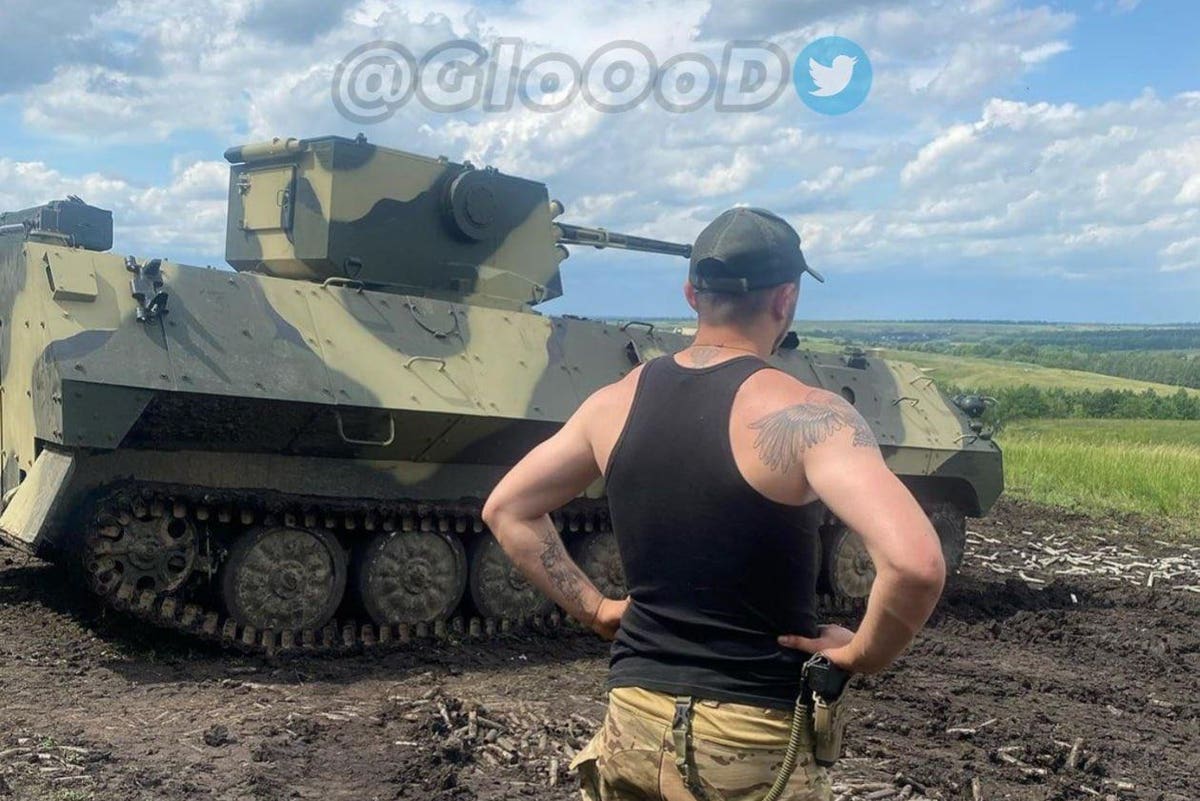The parade of improvised infantry fighting vehicles continues in Ukraine. The latest do-it-yourself IFV in Ukrainian service is an old MT-LB armored tractor with a new turret.
This tracked MT-LB with its remote-controlled BM-7 turret might be the most heavily armed of Ukraine’s rush-job IFVs.
The BM-7 turret, which also arms Ukraine’s locally-made BTR-4 wheeled IFV, boasts a stabilized 30-millimeter autocannon. A gunner aims the cannon via a video feed from inside the vehicle’s hull. The fast-firing cannon can chew right through trees, buildings and even concrete walls.
Now, no sane commander would send a lightly-protected MT-LB with its 10-millimeter-thick armor into a direct fight with enemy tanks or IFVs. Even a determined machine-gunner could poke holes in an MT-LB, given the chance.
But the BM-7’s stabilized autocannon has made the BTR-4 one of Ukraine’s best infantry-support vehicles for chaotic urban combat, where agility and rate of fire—that is, the ability quickly to respond to surprises—can matter more than armor does.
There’s no reason an MT-LB-BM-7 wouldn’t also make an excellent urban combat vehicle. Just don’t try to roll it through a minefield or pre-sighted artillery kill zone, where it would offer its three crew and potentially 10 passengers almost no protection.
That the Ukrainians are up-arming some of their spare MT-LB chassis—which Ukrainian industry mass-produced from the 1970s into the early 2000s—speaks volumes about Kyiv’s needs as Russia’s wider war on Ukraine grinds toward its 18th month.
Tanks get all the attention, but IFVs might matter more. In the seven weeks since Ukraine launched its long-anticipated southern counteroffensive, it’s become increasingly apparent that the sheer density of defensive fortifications all along the 600-mile front makes fast, long-range maneuver almost impossible for either side.
Instead, an attacking force usually advances slowly, with infantry often moving on foot in the company of their vehicles as they carefully exploit small gaps in enemy positions. That’s why a battlefield victory in the summer of 2023 tends to result in the winning force advancing just a few hundred yards.
As often as not, it’s a close infantry fight. So vehicles such as IFVs that directly support the infantry are in the highest demand.
That’s why Ukraine has asked for just 300 Western-made tanks—and so far has been promised 240—but happily has accepted donations of around 2,000 IFVs and heavily-armed armored personnel carriers, including 350 of the best American-made tracked M-2 and wheeled Stryker IFVs, 100 German-made Marders and at least 50 Swedish CV90s.
Ukrainian forces need all the IFVs they can get. And the bigger the gun, the better.
The MT-LB-BM-7 represents a firepower upgrade over the previous Ukrainian MT-LB IFV, whose remote-controlled turret packed a 14.7-millimeter heavy machine gun that, while plenty powerful, isn’t the urban chainsaw that a 30-millimeter autocannon is.
How many MT-LB-BM-7s the Ukrainians can produce depends more on turrets than it does on hulls. There could be hundreds, or even thousands, of unused MT-LBs lying around. But the BM-7 turret is in much shorter supply.
It already is apparent that Ukrainian industry is cutting corners to produce as many MT-LB-BM-7s as it can, as quickly as it can. The BTR-4’s version of the turret has an attached anti-tank missile launcher. The MT-LB’s version of the turret … doesn’t.
Read the full article here





